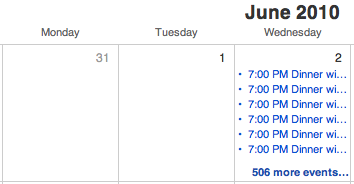I’ve been neglecting the blog lately. I compose thoughts and entries in my head, but never commit them to the keyboard. It has been a fun and busy last few months, and I have a lot of things to record that I may never get around to recording. Some highlights…
I saw this really amazing interactive theatre piece called Sleep No More put on by Punchdrunk in association with the American Repertory Theatre. It is a retelling of Macbeth mashed up with Hitchcock’s Rebecca, and I had to go back and see it again, and still didn’t feel like I had adequately explored the piece, spread across over 30 rooms in an old school building in Brookline. The show got immensely popular near the end, with people flying in from all over the country to experience it and every showing selling out weeks in advance. I’m glad I caught it early in the run, but am disappointed I wasn’t able to pick up a third showing.
More exciting though, coming out of the show the first time I got a surprise call from Shaina, letting me know that she and Brian chose their three year anniversary as an occasion to get engaged to be married. Wow. My little sister is getting married. I feel old now. And a little behind.
Spurred to competition (kidding!), Meghan and I discussed living together, and then decided she would move in. Now we’re caught in an awkward position where her lease doesn’t end until July 31st, and we have to keep looking wistfully forward by six months. It does give us time to do some redecorating, including repainting and refurnishing the bedroom with a fancy new bedroom set that set me back by a few trips to Iceland. Today is our nine month anniversary.
So no travels abroad in the near future, alas, but there was Christmas fun in New Jersey and then Connecticut with Meghan’s extended family, followed by California with my family through New Years. We explored LA and San Diego, had some nice meals and got to experience the Rose Parade, including a sad Ronald MacDonald when his float broke down. On the outside he was smiling, but I could see through the painted facade to the pain beneath.
It was fun discovering my home state anew through Meghan’s eyes. Venice Beach was a blast, and of course we went to In-N-Out, as well as the Farmer’s Market on Wilshire. We’re planning to hit up the northern part of the state at some indeterminate point in the future, especially San Francisco and perhaps Sacramento, but nothing too soon (see above re: bankrupting furniture purchases!).
All this travel and family time left me feeling a bit cut off from friends, especially in the dreary month of January, but that was delightfully remedied, first by a ski day with Jeremy, and then by a lovely Egremont weekend. We traveled to Meghan’s family’s house in the Berkshires on the New York border, with a dozen friends in tow. There were many board games, some good skiing at Jiminy Peak, bowling, and even some unexpected snow shoveling. My Hanukkah gift of new skis performed brilliantly, and I got to experience the strangest feeling of not being in terrible pain at the end of the day. The joy of boots that fit my oddly-shaped feet!
There has been some trouble at work with a big new deployment that went hideously awry and had to be rolled back. Now the rest of my work plans have been derailed by fruitless efforts to determine what went wrong and how to fix it without making wholesale changes to our environment. It’s a mess and no fun, but hopefully will pass soon, and I will be able to move on to more interesting things.
My Harvard contract expires in mid-March, so I interviewed for some other jobs but ultimately decided that where I am is where I’d like to stay for the time being. We’re going through some complicated renewal/term-to-perm process that hopefully will be resolved prior to my last day.
Those are the highlights, I suppose. Lots more I could talk about, but now I am late for work. Coming one day: pictures from California, and maybe even the pictures from my big Birthright trip to Israel back in August!
What have you been up to?




